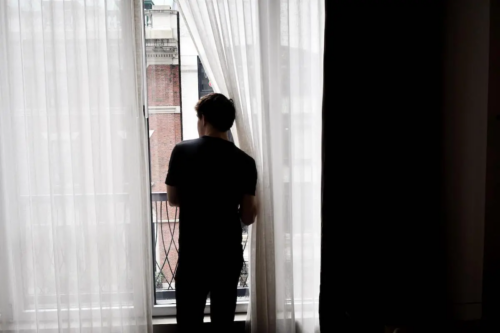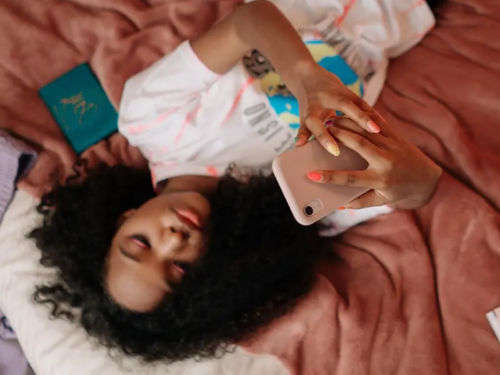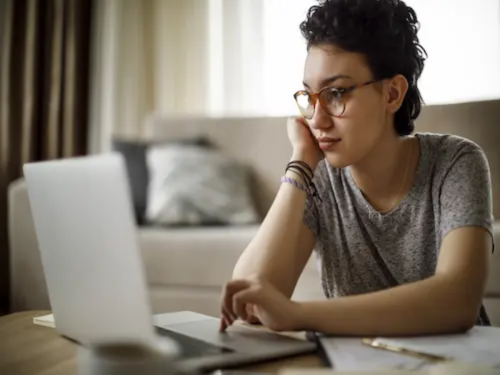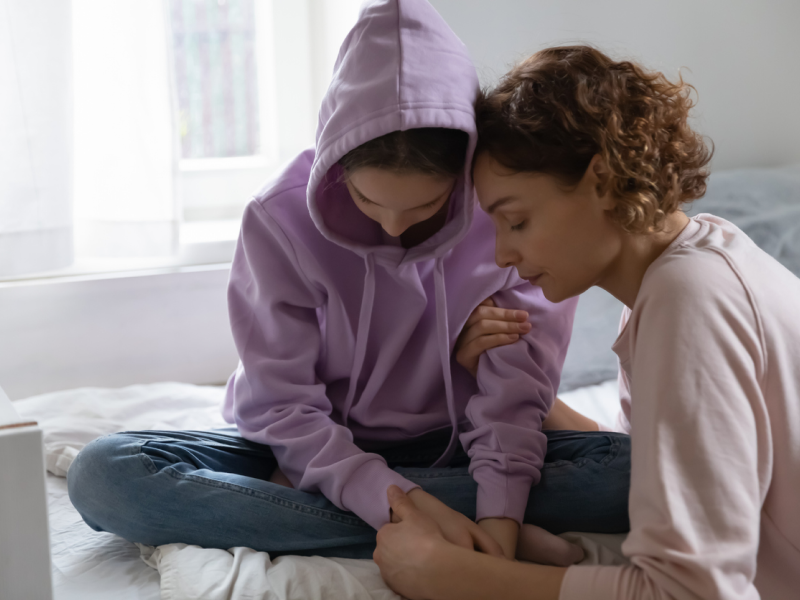
Table of Contents
List of Phobias: Common Fears and Symptoms
Written By: Charlie Health Editorial Team
August 26, 2022
11 min.
Phobias affects almost 1 in 10 Americans. We dive into a list of the most common ones that people struggle with.
Learn more about our Clinical Review Process
Table of Contents
Anxiety disorders, including phobias, are one of the most common mental illnesses in the United States. According to the National Institute of Mental Health, approximately 9.1 percent of U.S. adults experience a specific phobia. Phobias can arise in early childhood or adolescence, but most people develop phobias between the ages of 15 and 20.
Many people with phobias avoid objects and situations that can cause fear and anxiety. For example, if you have a phobia of snakes, you might avoid touching snakes, thinking about snakes, or looking at pictures of them. You don’t have to be in a situation where you’re fearful to experience panic, and it’s normal to experience intense discomfort even when you’re not actually in a feared situation.
If left untreated, phobias can take a toll on your quality of life and may contribute to other mental health conditions. Complex phobias, such as agoraphobia and social phobia, are more likely to cause co-occurring mental disorders.
If you’re experiencing any symptoms of anxiety disorders, it’s important to reach out for professional help. Here’s everything you need to know about phobias to start the healing process and overcome your anxiety.
What are phobias?
A phobia is an overwhelming, persistent, and irrational fear of a specific object, situation, or activity. Phobias are the most common type of anxiety disorder, according to the American Psychiatric Association. If you have a phobia, you might go to great lengths to avoid feared situations or objects—or you might endure it with significant distress and anxiety.
It’s important to remember that regular fears and phobias aren’t the same thing. If you have a phobia, you might experience significant emotional distress, discomfort, and panic when exposed to a fear object or situation. People with phobias often have panic attacks, which can occur suddenly and without warning when exposed to a phobia trigger.
Symptoms of Phobias
While anxiety disorders affect everyone differently, many people with phobias experience an intense combination of physical symptoms. Some typical symptoms of phobias include:
- Chest pain or tightness
- Choking sensation
- Nausea
- Uncontrollable sweating or trembling
- Rapid heartbeat
- Sweating
- Hot or cold flashes
- Dry mouth
- Dizziness or lightheadedness
In addition to these physical symptoms, many people experience the following psychological symptoms of anxiety:
- An impending sense of doom
- Feeling like you’re “losing control”
- Feeling intensely uncomfortable around the fear object/situation
- Feelings of unreality or feeling disconnected from the world
To avoid these feelings, many people with phobias avoid situations where they might encounter the source of fear. For example, if you have agoraphobia, you might have extreme anxiety having to enter new places for the first time.
Types of Phobias: A–Z List of Phobias
According to the Diagnostic and Statistical Manual of Mental Disorders (DSM-5), specific phobias typically fall within five major categories:
- Fears related to animals
- Fears related to the natural environment
- Fears related to health issues
- Fears related to specific situations
Because there’s no official list of phobias beyond what’s outlined in the DSM-5, researchers and mental health professionals create names for phobias by combining a Greek prefix with a -phobia suffix. While there isn’t an exhaustive list of phobias, some common phobias include:
A
Ablutophobia: Ablutophobia, the fear of bathing, is an uncommon but serious phobia that tends to affect women and children.
Achluophobia: Achluophobia, the fear of darkness, is common in children.
Acrophobia: Acrophobia is the fear of heights. Depending on its severity, you might fear being on higher floors of buildings, climbing ladders, or other activities involving heights.
Aerophobia: Aerophobia, the fear of flying, is a common phobia that affects over 20 million people in the United States.
Algophobia: Algophobia, the persistent fear of pain, is common in people with chronic conditions. You might fear that your pain will return or get worse.
Agoraphobia: Agoraphobia is the fear of open spaces or crowds. Sometimes, agoraphobia can extend to a fear of leaving home or being in places where escape is difficult. If you have agoraphobia, you may also experience panic attacks in uncomfortable situations.
Aichmophobia: Aichmophobia is the fear of needles or sharp objects, such as knives, scissors, sharp corners, and pins.
Amaxophobia: Amaxophobia is the fear of riding in a vehicle, either as a passenger or driver. It can have a serious impact on a person’s life, making it difficult to travel via car, bus, train, or airplane.
Androphobia: Androphobia is the fear of men. Like other specific phobias, androphobia can interfere with everyday life, relationships, work, and education.
Amenophobia: Amenophobia is an umbrella term for air-related phobias. Some people may fear gusty winds, while others may fear swallowing air (aerophagia).
Angrophobia: Angrophobia is the fear of anger. If you have angrophobia, you might fear getting angry because anger feels out of control.
Anthropophobia: Anthropophobia, the fear of people or society, often resembles social phobia. However, anthropophobia involves a fear of all people, regardless of the situation.
Aphenphosmphobia: Aphenphosmphobia is a rare but specific phobia that involves the fear of being touched.
Arachnophobia: Arachnophobia is the intense fear of spiders and other arachnids.
Ataxophobia: Ataxophobia is the fear of disorder and untidiness. You might feel intense fear and discomfort in messy, unclean environments. This specific phobia is closely linked with obsessive compulsive disorder (OCD).
Atelophobia: Atelophobia is the fear of imperfection. Many people with atelophobia avoid situations where they may make mistakes, leading to anxiety, depression, and low self-esteem.
B
Bacteriophobia: Bacteriophobia (also called germophobia) is the fear of bacteria and contamination.
Bathmophobia: Bathmophobia is the fear of stairs and steep inclines. You might develop this fear after trauma involving a fall, injury, or death.
Batrachophobia: Batrachophobia is the fear of amphibians, such as frogs and toads.
Belonephobia: Belonephobia is the fear of pins and needles. It affects up to 10 percent of the population.
C
Cacophobia: Cacophobia is the fear of ugliness, becoming ugly, or having an unpleasant appearance.
Catagelophobia: Catagelophobia is the fear of being put down or ridiculed. It may take root during childhood, as children are more emotionally sensitive to criticism.
Catoptrophobia: Catoptrophobia (also called spectrophobia) is the fear of mirrors and what may be reflected in them.
Chionophobia: Chionophobia is the fear of snow or winter weather. Even the thought of light snow can cause intense anxiety.
Chrometophobia: Chrometophobia is the fear of spending money. It can make it difficult for you to pay bills or spend money on essential things, even if you have enough money to afford them.
Chromophobia: Chromophobia is the fear of colors. This fear often stems from post traumatic stress disorder (PTSD). Sometimes, a person may associate a neutral stimulus (like a specific color) with a traumatic event.
Chronophobia: Chronophobia is the fear of clocks and the passing of time.
Cibophobia: Cibophobia is the general fear of food. If you have cibophobia, you might avoid specific food or drinks. While cibophobia is not an eating disorder, it’s possible to have cibophobia and an eating disorder at the same time.
Claustrophobia: Claustrophobia is the fear of confined, enclosed, or tight-fitting spaces.
Coulrophobia: Coulrophobia is the fear of clowns.
Cynophobia: Cynophobia is the fear of dogs. You might experience intense anxiety when you see, think about, or encounter a dog. Sometimes, people with cynophobia avoid places where dogs might be.
D
Daemonophobia: Daemonophobia, the fear of demons, is often rooted in religious beliefs.
Decidophobia: Decidophobia is the fear of making decisions. It can affect people even when it comes to small decisions, such as choosing what to eat for dinner or what to wear.
Dentophobia: Dentophobia, the fear of going to the dentist, may arise from a previous traumatic experience. If you have dentophobia, you might refuse to go to the dentist—even if you’re in pain.
Domatophobia: Domatophobia is the fear of houses or being inside a house.
Dystychiphobia: Dystychiphobia is the fear of having an accident. This fear can affect your quality of life, and you may avoid situations where accidents can occur—even if an accident is unlikely. Dystychiphobia is often associated with PTSD.
E
Ecophobia: Ecophobia (also called eco-anxiety) is the fear of environmental degradation. You might also experience feelings of powerlessness to prevent environmental change.
Emetophobia: Emetophobia is the fear of vomiting. In many cases, the thought or anticipation of vomiting can cause significant distress.
Erotophobia: Erotophobia is the fear of sex or sexual intimacy. This fear may be linked to physical or psychological conditions, such as erectile dysfunction, body dysmorphia, or past sexual abuse.
Equinophobia: Equinophobia is the fear of horses.
F
Febriphobia: Febriphobia is the fear of fever or an increase in body temperature.
Felinophobia: Felinophobia is the fear of cats.
G
Gamophobia: Gamophobia is the fear of marriage or long-term commitment in relationships. Gamophobia can make it difficult to form lasting intimate relationships, and you might feel intense anxiety when you’re in a relationship.
Genuphobia: Genuphobia, the fear of knees, may involve anxiety about potential knee injuries or repulsion to the appearance of knees.
Glossophobia: Glossophobia, the fear of public speaking, is an extremely common phobia that affects up to 75 percent of the population. You might feel slightly nervous at the thought of public speaking, or you might experience full-on panic with intense anxiety symptoms.
Gynophobia: Gynophobia is the fear of women. It can also describe the fear men experience of being humiliated by women (emasculation).
H
Haphephobia: Haphephobia is the fear of being touched.
Heliophobia: Heliophobia is the fear of the sun. For some people, heliophobia might be caused by intense anxiety about getting skin cancer or wrinkles.
Hemophobia: Hemophobia is the fear of seeing blood or getting bloodwork done. It can have a serious impact on your life, especially if you skip doctor’s appointments to avoid bloodwork.
Herpetophobia: Herpetophobia is the fear of snakes, lizards, and other reptiles.
Hydrophobia: Hydrophobia, the fear of water, is often associated with rabies infections.
Hypochondria: Hypochondria (also called illness anxiety disorder or health anxiety) is the fear of having a serious health condition. You might feel like normal sensations or minor symptoms are signs of a severe illness, even if medical exams don’t reveal any health issues.
I
Iatrophobia: Iatrophobia is the fear of doctors. If you have iatrophobia, you might refuse medical attention—even if you have signs of a serious illness.
Insectophobia: Insectophobia (also called entomophobia) is the fear of insects.
K
Koinoniphobia: Koinoniphobia, the fear of rooms, can cause people to avoid rooms full of people.
Koumpounophobia: Koumpounophobia is the fear of buttons.
L
Leukophobia: Leukophobia is the fear of the color white.
Lilapsophobia: Lilapsophobia is the fear of tornadoes and hurricanes. While tornadoes and hurricanes are dangerous, people with lilapsophobia experience a high level of fear that disrupts everyday life.
Lockiophobia: Lockiophobia, the fear of childbirth, is often related to anxiety over labor, medical treatments, finances, and parental responsibilities.
M
Mageirocophobia: Mageirocophobia is the fear of cooking. It may stem from other mental health issues, such as OCD.
Megalophobia: Megalophobia is the fear of large objects, such as large buildings, animals, and vehicles.
Melanophobia: Melanophobia is the fear of the color black or other dark colors.
Microphobia: Microphobia is the fear of small objects, such as insects and germs.
Mysophobia: Mysophobia (also called germophobia) is the fear of germs. If you have mysophobia, you might go out of your way to avoid situations that expose you to germs. You might also find yourself stuck in repetitive patterns, similar to OCD.
N
Necrophobia: Necrophobia is the fear of dead things (such as corpses) and other things associated with death.
Noctiphobia: Noctiphobia is the fear of the night.
Nomophobia: Nomophobia is the fear of being without your mobile phone. It stems from an increased dependence on technology. For example, you might feel intense anxiety over what might happen if you can’t access social media or needed information.
Nosocomephobia: Nosocomephobia is the fear of hospitals. It can prevent you from seeking medical care or visiting loved ones in hospital settings.
O
Obesophobia: Obesophobia is the fear of gaining weight. If you have obesophobia, you might develop other mental disorders, such as anorexia or bulimia, to avoid weight gain.
Ombrophobia: Ombrophobia, the fear of rain, can involve anxiety over floods, drizzles, or intense rainstorms.
Ophidiophobia: Ophidiophobia, a common specific phobia, is the fear of snakes.
Ornithophobia: Ornithophobia is the fear of birds.
Osmophobia: Osmophobia, the fear of smells, is relatively common among people who experience migraine headaches. For some people, specific scents can trigger migraines.
P
Papyrophobia: Papyrophobia is the fear of paper.
Pathophobia: Pathophobia is the fear of disease. While pathophobia involves a specific fear of health issues, hypochondria involves panic over minor symptoms and normal body sensations.
Pedophobia: Pedophobia is the fear of children.
Philemaphobia: Philemaphobia, the fear of kissing, is common in inexperienced kissers.
Philophobia: Philophobia is the fear of love. If you have philophobia, you might find it overwhelmingly difficult to maintain relationships.
Phonophobia: Phonophobia is the fear of sound.
Photophobia: Photophobia, the fear of light, is often associated with the connection between eye cells that detect light and a nerve in your head. For some people, light sensitivity can trigger migraine headaches.
Porphyrophobia: Porphyrophobia is the fear of the color purple.
Pyrophobia: Pyrophobia is the fear of fire.
Q–S
Samhainophobia: Samhainophobia is the fear of Halloween.
Scolionophobia: Scolionophobia is the fear of school. It’s important to note that distaste for school, studying, or learning is not the same thing as having scolionophobia.
Scoptophobia: Scoptophobia, the fear of being stared at, is often associated with social phobia. If you have scoptophobia, you might feel a rapid heartbeat, emotional distress, and nausea when someone looks at you.
Sociophobia: Sociophobia (also called social phobia) is the fear of social situations. You might avoid social gatherings, hanging out with friends, or other activities out of fear of embarrassment and judgment.
Somniphobia: Somniphobia is the fear of sleep. If you have somniphobia, you might worry throughout the day about being able to sleep. For some people, somniphobia stems from nightmares or sleep paralysis.
T
Tachophobia: Tachophobia is the fear of speed.
Technophobia: Technophobia is the fear of new technology, especially computers.
Thalassophobia: Thalassophobia is the fear of large bodies of water, such as oceans, lakes, and the sea.
Trichophobia: Trichophobia is the fear of hair. It can arise from other mental health conditions, such as OCD, depression, or trichotillomania.
Trypanophobia: Trypanophobia is the fear of needles, getting blood drawn, or being injected.
Trypophobia: Trypophobia is the fear of holes. If you have trypophobia, you might experience disgust when you see trypophobic imagery.
V–Z
Venustraphobia: Venustraphobia (also called caligynephobia) is the fear of attractive women.
Xenophobia: Xenophobia is the fear of strange or unknown cultures, customs, and people. People with xenophobia might avoid or reject “outsiders,” or make negative comments toward specific cultures.
Zoophobia: Zoophobia is the fear of animals. Many people with zoophobia fear a specific type of animal.
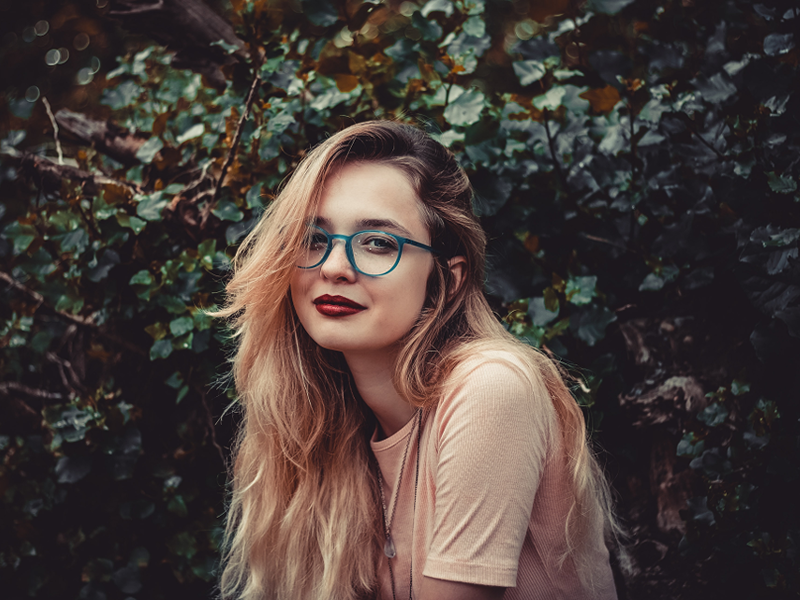
Get Help With A Phobia From Charlie Health
Living with persistent fear and anxiety can make everyday life feel like a challenge. At Charlie Health, we understand where you’re coming from. That’s why we offer personalized, virtual mental health treatment so you can start your healing journey from the comfort of your own home.
Our state-of-the-art intensive outpatient program (IOP) combines individual therapy, support groups, family therapy, and psychiatric support (if needed) to match your unique mental health needs. Our compassionate clinicians will meet you where you are, answer your questions, and help you build strategies to overcome anxiety.

